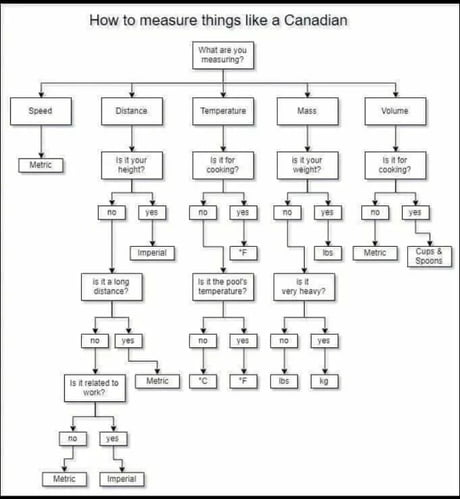Shoulnd the buttom be a spring return and swich just toggle on/off
Completely with you with the proper terms being momentary and maintained.
The only reason latching may be better than maintained is language issues. Maintained sounds like it requires greasing if you are just learning english.
Heheheheh, I like your humor. I definitely don’t want switches that need greasing. ![]()
I’ve only ever heard of, and used the terms ‘Momentary’ and ‘Latching’.
See RS site.
Yep, you linked to a Non USA website. I’m not trying to start a war. I’m just realizing that switch terminology isn’t universal as I previously thought. Well really, is anything universal in this world?
Dont get me started on EU vs N.A. wiring and piping standards.
The old manufacturing protectorates make little sense now. It makes repairing import equipment in Canada extra special. SI should cover more than just measurements.

Let me add one more thing, momentary switch = non-permanent, example: doorbell button, car horn button, as long as you keep pressed, the ignition turns off, when you release your hand, it returns to its previous state.
Latching switch = permanent switch, press it once and stays in its position, when pressed again it returns to its previous state, example : lamp switch on the wall at home.

Sell grain in tonnes, price in bushels, yield in bushels, spray gallons (imp. or US)/acre, chemical Litres/acre.
Sometimes while watching plane crash report programs on Nat-Geo, I learned that there are planes that crash only because of calculation errors, like cm-inch or kg-pound-liter.
I didn’t think it was this bad, but I can confirm it’s accurate.
Even in Finland othervice all is SI-units, but TVs are in inches, combine harvester headers & boats in feet, timber partly in inches…
But really it is like Brian describes - the selection is not to imply what type of a button one physically has, but instead of how one wants it to behave. Sometimes you may have a momentary push button that you want to latch/become maintained by the software, while sometime you may want it to really act as a momentary button. Choose which one is better for the purpose.
For example controlling hydraulic flow to a cutting head/brush/boomtip spray nozzle etc; to stay on only while pressed or to turn on and stay on after button has been pressed. Exactly the same button, but software writer cannot know how you want to control it.
A momentary switch is way preferred, as it can be used for anything and allows more options.
The definition or picture of the switch isn’t really the problem, it is that any type of switch can be used for either function.
So exactly as @Juurikko says, if it works the wrong way you want it to work, pick the other one.
Interesting fact about the US, The US signed the metre (not a spelling mistake) convention and bases all customary units on SI standards. As an aside, the Utah constitution from 1895 required the metric system to be taught in schools. This requirement was repealed in 1987.
So while acres, feet , pounds etc are used, they are only conversions from metric standards. In true Canadian fashion - Sorry 'bout that.
I really wish everyone just used metric - would make my life 100x simpler. Metric is soooooo easy.
I really do wonder at those who still champion imperial units. The interconnections between metric units alone make them so easy to work with.
Watching Youtube videos of US makers building stuff, juggling with 1/8th’s and 32nd’s etc is just complexity for the hell of it!
There are only three countries in the world that actually use imperial. The U.S., Liberia and Myanmar.
It’s a US thing. You wouldn’t understand. ![]()
There’s this mentality in the US, that we change things a bit to our own limited understanding, and then place fancy words and acronyms on it (USA, SAE) and then they’re somehow better than the rest of the world. Now I’m showing my German background (~5 generations ago).
I’m part of an ethnic group that speaks a German dialect. We have a joke that our language makes us think different. Then if we meet people down to earth and practical, we say they must think in German. No offense, please.
TBF I think most of the world does understand! ![]()
I’m from the UK and we can be a bit like that too at times.
…but we don’t pretend our stuff is the best, we buy German! ![]()
…also, no offence intended.
i would understand you using the imperial system - if you actually based it in the imperial system as your standard. But you do not. Everything is based in the metric system with a whole bunch of very strange and completely awful varying values that are converted into a mess of completely unrelated numbers.
So how do we know how wide a section is in inches?
First we have to take the distance of the speed of light for 1 / 299792458 second. But how long is a second? A second is defined by the hyper fine transition frequency of the time it takes an electron to jump from 2 closely spaced low energy states in a cesium 133 atom. This is what the entire planet uses as the meter including the USA.
From there you take that and multiply it by 39.3701 or 3.28084 for feet or 0.000621371 to miles.
And since this ridiculous conversion is based on wild made up numbers you can’t just go 1 cm * 100 to display meters in AOG like metric does, you have to take that inch and now make 2 fields based on the length of someone’s shoe - feet - inches 2 field abortion that never equates back evenly to meters and causes rounding errors and crashes if the form comes up too many times.
Like the entire US weight and measures system, AOG stores everything in meters, and converts it all every time to imperial for display - and if you change something gets rounded off from that very strange system back to a useful and standard measurement system - metric.
This is the pain that every piece of software must do. Every paper, every piece of engineering, along with all the errors of rounding and mistakes made constantly.
Perhaps AOG should help pushing things along, by just deleting the imperial system… AOG must constantly in a thousand places check if it is set in imperial and then convert to and convert back.
//inches to meters
public static double in2m = 0.0254;
//meters to inches
public static double m2in = 39.3701;
//meters to feet
public static double m2ft = 3.28084;
//feet to meters
public static double ft2m = 0.3048;
//Hectare to Acres
public static double ha2ac = 2.47105;
//Acres to Hectare
public static double ac2ha = 0.404686;
//Meters to Acres
public static double m2ac = 0.000247105;
//Meters to Hectare
public static double m2ha = 0.0001;
// liters per hectare to us gal per acre
public static double galAc2Lha = 9.35396;
//us gal per acre to liters per hectare
public static double LHa2galAc = 0.106907;
//Liters to Gallons
public static double L2Gal = 0.264172;
//Gallons to Liters
public static double Gal2L = 3.785412534258;
US kept Imperial just so Arnold could make this joke.
Portraying an Agronomy professor really launched his movie career.
And yet I’ve been to parts of Canada where roads are laid out in square miles, and the house are built with 2 inch x 6 inch studs, and 4 feet x 8 feet sheets of plywood! (Just giving you a hard time😄)
Even worse, 4x8 and 15mm thick. Canada is a complete mess, completely agree.
